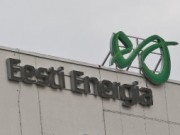With the completion of the Iru waste-to-energy block, large-scale mixed municipal waste depositing in landfills will end in Estonia and waste will be reused in order to produce electricity and heat. “The Iru waste-to-energy block is a new solution for Estonia, both in terms of energy production and waste handling. It is also an important environmental project because for the first time in Estonia we are using waste that previously went into landfills,” said Sandor Liive, the Chairman of the Management Board of Eesti Energia, at the opening ceremony of the waste-to-energy block.
The completion of the Iru waste-to-energy block will have a significant impact on the heat price in Maardu and Tallinn and, thanks to sustainable waste handling, the waste handling fee has also dropped all over Estonia. “Heat energy produced from waste is one-fourth cheaper than energy produced from natural gas. Waste handling prices have dropped significantly because reusing waste in order to produce energy is cheaper than depositing it in landfills,” explained Liive.
About 85% of the energy stored in waste is transformed into electricity and heat in Iru. The plant’s heat production capacity is 50 MW and electricity production capacity is 17 MW. Technology used in the waste-to-energy block is suitable for burning several types of waste and it does not require sorting, crushing, or sieving of mixed municipal waste prior to combustion.
However, the waste-to-energy block does not compete with domestic garbage sorting and separate collection because it is an alternative to depositing in landfills. In Estonia, about 300,000 tonnes of mixed municipal waste per year is left over from sorting, of which the waste-to-energy block can reuse about 220,000 tonnes.
When working at full capacity, the Iru waste-to-energy block burns about 27.5 tonnes of mixed municipal waste per hour. Such an amount of waste is created by approximately 70 average Estonian homes each year. On average, 80 garbage trucks per day visit the waste-to-energy block.
The electricity production of the Iru waste-to-energy block meets the electricity consumption of the town of Paide and its surroundings. Eesti Energia shall transmit heat energy to Tallinn and Maardu residents through the district heating network. The share of the Iru waste-to-energy block in the region’s heat market shall be about 20%.
The waste-to-energy block at the Iru power plant was built by a French company, Constructions Industrielles de la Méditerranée (CNIM), and it was based on a turnkey contract. General construction works were conducted by Merko Ehitus Eesti.
21 Декабря 2025 | воскресенье | 23:03


